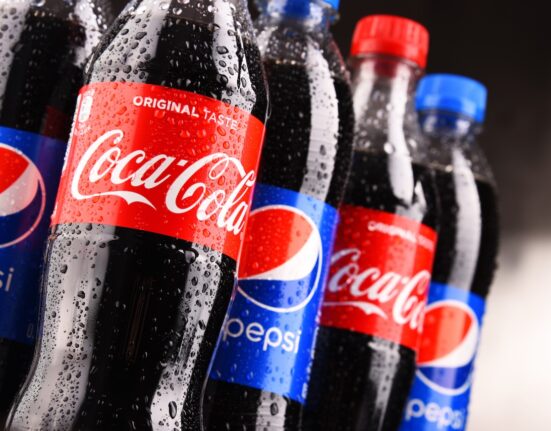It was a quiet night in Northeast Philadelphia when bourbon thieves struck. On March 14, 2024, at 2:30 a.m., a truck driver awoke to his vehicle shaking, only to witness two cars speeding away with his precious cargo. Now, in any normal world, such a brazen heist would be a scene in a movie instead of the morning news. Still, it’s just one example of a growing trend leaving the food and beverage industry reeling. From vanishing avocados in Texas to a snack maker scared to mention his name because of potential retribution, cargo theft is becoming a major headache for businesses across North America.
The numbers tell a sobering story. In the first quarter of 2024 alone, CargoNet, a theft prevention and recovery network, reported 925 cargo theft incidents — a whopping 46% increase from the previous year. Food and beverage items have become prime targets, with an average loss of $214,000 per stolen load in 2023. The worst part? Businesses, from shippers to retailers, are scrambling to protect their goods and keep up as thieves become bolder, more creative, and tech-savvy with an increasing amount of complex fraud schemes. Thus, many in the industry are left wondering: how can we keep our cargo safe in an increasingly risky world?
When Global Drama Meets Mother Nature
Picture this: You’re a shipping company, minding your own business, when suddenly the world throws you a curveball. That’s the reality of 2024 in a nutshell, with tensions in the Middle East causing chaos in vital shipping arteries like the Suez Canal and Strait of Hormuz. Oil tankers and container ships find themselves playing a high-stakes game of “dodge the conflict,” leading to delays and unexpected detours. However, while these ships focus on avoiding danger zones, they create perfect opportunities for cargo thieves. Rerouted shipments often pass through unfamiliar territory with weaker security, making them prime targets. And let’s face it: when companies scramble to deal with higher costs and capacity issues, security measures might take a back seat.
The economy also loves to keep us on our toes, and cargo security is no exception. Remember the trade wars between the U.S. and China? They didn’t just make headlines; they rewrote the shipping playbook. Companies started looking for alternative markets, shaking up traditional routes and demands. During tough economic times, there is a shift towards shipping basic necessities — think food and drinks. These might seem less valuable, but they’re actually goldmines for thieves. Why? They’re easy to consume and leave no trace. Plus, when times get tough, more people might turn to desperate measures, potentially swelling the ranks of cargo criminals.
As if geopolitics and economics weren’t enough, Mother Nature decided to join the party. Climate change is throwing a wrench into the works of global shipping. Extreme weather events are becoming more frequent, turning once-reliable routes into obstacle courses. In some cases, cargo ends up sitting in storage longer than planned, practically waving a “steal me” flag to opportunistic thieves. And here’s a twist: while some routes are becoming nightmares, others are opening up. Clearly, the shipping industry has its work cut out for it.
How One Shipment Escaped the 7,800 Hijackings
“We are living in an era where cargo theft has become a pervasive challenge—costing businesses millions annually and jeopardizing the integrity of supply chains across the globe,” says Krenar Komoni, chief executive and founder of Tive, a company that provides real-time, sensor-driven tracking solutions and cloud-based software for monitoring the conditions of in-transit shipments, including food and beverage. His words ring especially true for one snack company that worked with Tive and faced this threat head-on.
The client, wishing to remain anonymous due to fears of retribution, found themself in the crosshairs of Mexico’s rampant cargo theft problem — the country saw over 20,000 cargo theft events in 2023 alone, including 7,800 hijackings. For this client, one day, a truck of theirs loaded with precious chocolates and candies cruising down a highway near Mexico City suddenly vanished.
Now while this type of challenge is all too common, thanks to Tive’s Solo 5G trackers, the company wasn’t left in the dark. “Once we realized the truck had been taken, we were able to watch our shipment move through the city on the platform,” a company representative explained. It was like watching a high-stakes game of cat and mouse unfold in real-time on their screens.
The story doesn’t end there. Armed with precise location data, the candy company alerted the police. “We were able to tell the police that the truck had arrived at a specific location, a police operation was set up, and we were able to recover everything in that truck,” they recounted. What could have been a bitter loss turned into a sweet victory, all because of a small tracker that outsmarted the thieves. However, are all companies as lucky as this one?
Technological Advancements and Industry Challenges in Confronting Cargo Theft
Criminals have also set their sights on time-sensitive perishables to exploit their unique vulnerabilities like temperature fluctuations, tight delivery windows and the constant threat of spoilage. With 14% of food spoiling before it even hits retail shelves (a $400 billion annual loss), according to The Food and Agriculture Organization (FAO), the stakes couldn’t be higher for shippers and consumers.
Luckily, cutting-edge technological solutions, such as real-time tracking systems, are being deployed to monitor conditions and enhance security side by side. “Our solutions enable companies shipping perishable goods to take control of their shipments, reduce risk and ensure complete, end-to-end shipment visibility,” explains Komoni. Their real-time tracking systems don’t just pinpoint a truck’s location — they monitor temperature, shock, and even sudden braking. Just ask Idaho potato producer Sun-Glo Produce, who caught a malfunctioning refrigeration unit mid-journey thanks to a well-timed alert. “Tive helped us save a lot of money and time that day,” their Vice President of Sales Jill Crapo Cox said.
But here’s the twist: the same digital tools empowering shippers are also arming the bad guys. Tech-savvy thieves use GPS tracking, hacked transportation management systems and sophisticated online research to plan their heists. It’s a constant arms race, with both sides leveraging cutting-edge technology. And with instances of strategic cargo theft increasing 430% year-over-year, according to CargoNet data, it’s clear that the good guys have their work cut out for them.
While solutions from providers like Tive help, the industry requires a multi-pronged approach combining high-tech solutions with old-school vigilance. Advanced locking mechanisms and tamper-evident e-seals make containers tougher to crack. Meanwhile, shared data platforms cultivate collaboration between carriers, shippers and law enforcement. Game on.
Cargo Theft: A Global Epidemic Hitting Your Wallet
Think cargo theft is just a North American headache? Think again. This destructive crime spree is playing out on highways, ports and warehouses worldwide, with thieves getting bolder and losses skyrocketing. South America leads the pack with a jaw-dropping median theft value of $77,000 per incident, while Europe isn’t far behind at $60,000. The global trend is clear: cargo theft surged 68% in late 2023 compared to 2022, with the average loss per heist jumping a whopping 67%. Experts warn 2024 could see another 35% spike. No cargo is safe, whether it’s electronics in Brazil or food shipments in Europe (where food and beverage thefts climbed from 16% to 21% of all incidents).
But how are crooks pulling off these increasingly lucrative heists? The methods vary by region, but creativity is the name of the game. In Asia, insider jobs are disturbingly common. European gangs favor aggressive “smash and grab” tactics, while South American thieves often go for full-blown highway hijackings. Tech-savvy criminals are upping the ante with cyber heists and even 3D-printed security device replicas. It’s not just about brute force anymore — these thieves outsmart traditional security measures at every turn.
The good news is that the world is fighting back. The FBI and Homeland Security have joined forces in the U.S., but the battle is going global. Companies worldwide are investing in cutting-edge tech like digital locks and real-time tracking. Some clever tactics North American firms could adopt from their international counterparts include decoy shipments, hidden compartments in trailers, and rigorous employee vetting to prevent insider jobs. Logistics organizations like BSI and TT Club pool global data to identify trends and empower businesses. After all, these crimes don’t just hurt big companies—they drive up prices for all of us.
Building a More Secure Future
Clearly, cargo theft isn’t just some distant problem for big corporations—it’s a real-world issue that affects all of us, from the truck driver waking up to find his bourbon stolen to the shopper facing higher prices at the grocery store. This global game of cat-and-mouse between thieves and shippers is getting more intense by the day, with both sides upping their tech game and tactics.
But here’s the thing—we’re not powerless in this fight. From innovative companies developing smart tracking solutions to international collaborations sharing crucial data, there’s a whole team effort forming to tackle this problem. And that’s exactly what the industry needs—teamwork. Because at the end of the day, whether you’re a small-town grocer or a global shipping magnate, we’re all in this together. Combining our smarts, our technology, and our determination can make life a whole lot harder for cargo thieves and guarantee that more of our goods—be it bourbon, avocados, or life-saving medicines—make it safely to their destinations. It’s a tall order, but with continued innovation and a united front, the industry can change the equation and build a more secure future for global trade.





